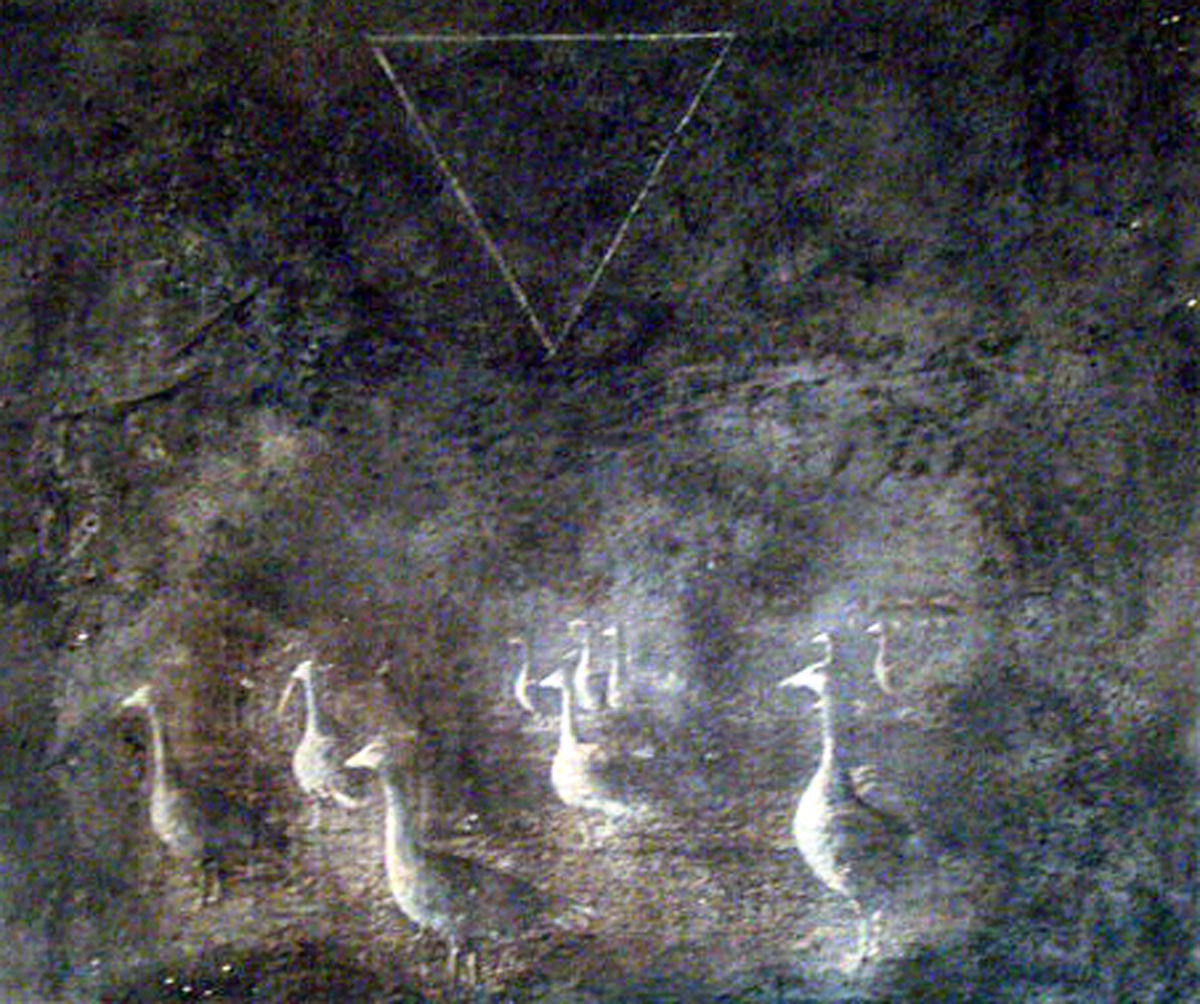HIER BIN ICH, WO BIST DU?
Diptych consisting of canvases measuring, mixed media on canvas 90 cm x 110 cm, 2005
This diptych is entitled “I’m here, where are you?” and it’s based on a study of Konrad Lorenz, who for his work on the interpretation of linguistic codes lived in close contact with wild geese. The paintings consist of scraps of photographs that represent the animals observed by the Viennese ethologist, and therefore represent a sort of modern bestiary, at the midpoint between art and science, in which the “institutionalised” language of symbol is replaced by analogue suggestion.
Suspended sentinels
The prevalence of brown and faded chromatic lines seems to evoke a dark underground populated by sinister presences. Yet, in the iconographic tradition of the medieval bestiary, the figure of the goose is normally associated with the protection of a place. In this diptych, the geese have lost this supervisory function and the artist constructs a mysterious relationship between the animals and a geometric shape (an inverted triangle). We see the hypostasis of abstract perfection, as if falling from the sky, the hills stretching away from the geese, waiting and watching diligently, a message that only they are able to decipher. The result is an atmosphere of alarmed expectation, which echoes the title: in this moment I am here and you – where are you?
Beyond the human dimension
In the same way that Lorenz was able to decode the language of the animals of this bestiary, these paintings also represent a code for the viewer to interpret. Despite the use of humble materials such as plotters, sand, pigments and chalk, used to “dirty” the paintings and make the beautiful dull, the geese remain central. They are the absolute protagonists of the diptych and set apart from the mysterious aura that characterises them, represent the last word of a dialogue, of a lost relationship between human beings and other life forms.
Diptych
The canvases were exhibited opposite one another, following the principle of resonance rather than iconographic continuity. To observe one, the viewer must necessarily turn away from the other: with the impressions received from both guiding the reading of the work, the viewer represents the fulcrum of the semiotic dialogue between the various elements of the diptych.





